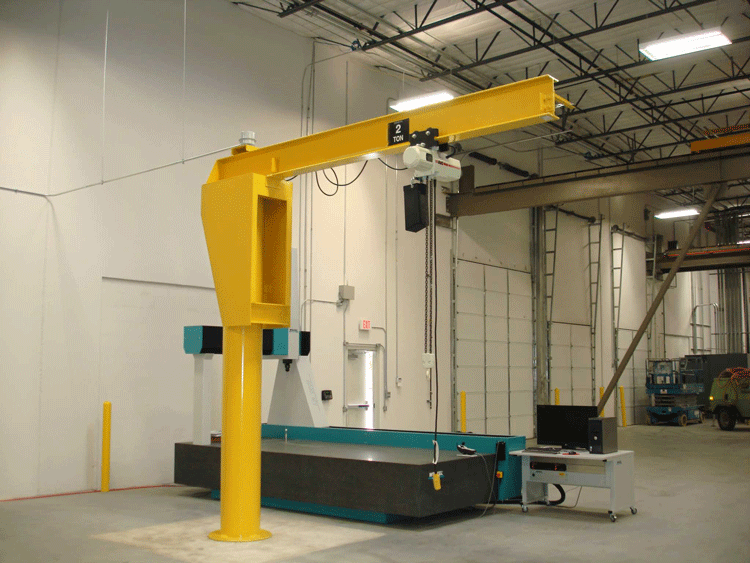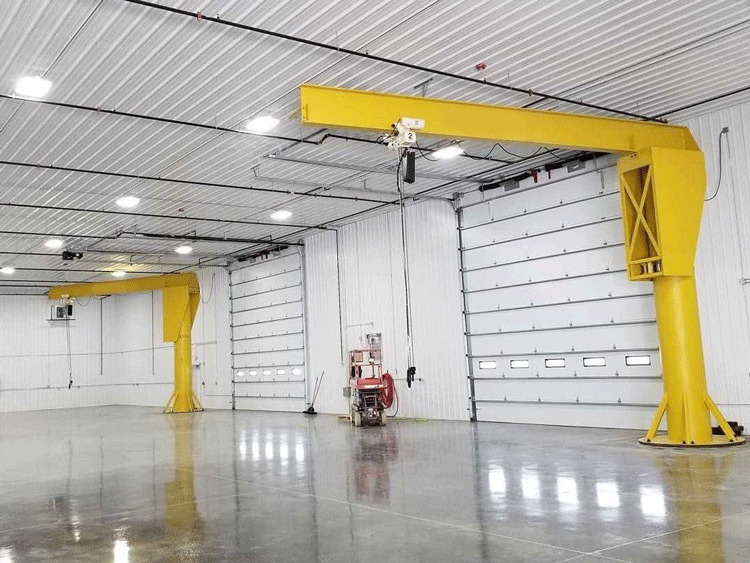Column jib crane, as a kind of light-duty crane, is increasingly playing an important role in the fields of industrial production and logistics. It is not only efficient and energy-saving, but also occupies a small area and is easy to operate and maintain. It is especially suitable for short-distance, frequent and intensive lifting operations.
The column is the supporting foundation of the entire cantilever jib crane. It bears radial force and axial force through single-row tapered roller bearings to ensure stable operation of the rotating arm. It is welded by a combination of I-beam steel and supports, making it both strong and flexible. Through the operation of an electric or manual trolley, the rotating arm can move horizontally, and the up and down lifting movements of the electric hoist are also completed. In addition, the rotating arm can also rotate around the column, which greatly improves the flexibility of the operation.

The support arm and the reducer jointly provide necessary support for the rotating arm and enhance its bending resistance and strength. The reducer drives the roller to realize the electric rotation of the cantilever, making the operation easier and more precise. This design not only improves work efficiency, but also reduces operation difficulty.
Electric chain hoist is the core part of lifting heavy objects. It can achieve horizontal movement of heavy objects and is the key to efficient hoisting. The electric hoist adopts advanced chain design, which not only ensures the stability of lifting, but also improves work efficiency.
The electrical part is the brain of the entire jib crane. It adopts C-rail flat cable power supply system and operates through low-voltage inter-controlled safety voltage. The flashlight door button realizes the control of fast rise, fast fall, slow rise, slow fall, the walking of the hoist trolley and the left and right rotation of the cantilever crane, while the collector ring is responsible for providing power when the cantilever rotates at any time. The careful design of this part makes operation easier and safer.
In practical applications, the cantilever crane has demonstrated its excellent performance and practicality. Whether it is material handling on the production line or loading and unloading operations in logistics and transportation, cantilever cranes can meet various needs with their efficient and stable working performance. This is mainly due to its compact structural design, reliable mechanical components and intelligent electrical control system.

In addition, the maintenance of jib cranes is relatively simple. Since its main components have been carefully designed and rigorously tested, routine maintenance only requires attention to some routine items, greatly reducing maintenance costs and time investment. At the same time, its simple appearance and compact structure also make the jib crane more convenient for storage and transportation. Whether it is a new project or the upgrading of old equipment, cantilever cranes can meet various needs with their efficient and stable working performance.
In the future, with the continuous advancement of science and technology and the growing demand for applications, the development prospects of cantilever cranes will be even broader. For example, by introducing IoT technology and big data analysis, we can achieve real-time monitoring and intelligent control of cantilever cranes, further improving production efficiency and equipment utilization. At the same time, with the increasing awareness of environmental protection, energy conservation and emission reduction will also become an important direction for the future development of cantilever cranes.
